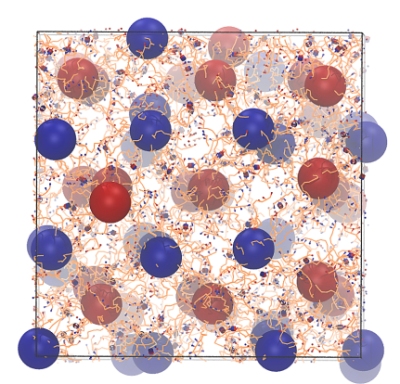Researchers have discovered self-assembly technologies that make nanoparticles to arrange themselves in a controlled manner resulting in unique materials with distinct transport, mechanical, optical and electrical properties.
 This image shows a crystal of nanoparticles (the red and blue spheres) held together by DNA strands (the orange lines) via the hybridization of complementary sequences (the blue and red rings).
This image shows a crystal of nanoparticles (the red and blue spheres) held together by DNA strands (the orange lines) via the hybridization of complementary sequences (the blue and red rings).
Alex Travesset, who serves as Associate Professor of physics and astronomy at Iowa State University and an associate of the Ames Laboratory of the U.S. Department of Energy, has reported about the novel self-assembly technologies in the ‘Perspectives’ section of the Oct. 14 issue of Science journal.
Travesset commented that self-assembly of nanoparticles has become a part of the LEGO era and they can be assembled in the same manner as with LEGOs. This marks advancement in the method used for manipulating matter, thus ensuring the evolution of novel applications, he said.
In his report, Travesset discusses the findings of a scientific paper, which is also reported in the same issue of the Science journal. According to the paper, a research team used complementary DNA strands in its technologies to connect nanoparticles and accurately manipulate their assembly to form target structures. Travesset reported that the research team’s developments can promote DNA-programmed self-assembly into a technology utilized for designing desired nanoparticle structures.
Travesset’s research work comprises theoretical analysis about the assembly of nanoparticles and the way to uniformly mix nanoparticles with polymers. Travesset commented that nanoparticle science has a huge potential due to the development of capable self-assembly technologies. These studies find immediate applications in the fields, including metamaterials, novel optical materials, medical sensing catalysis, and more, he said.